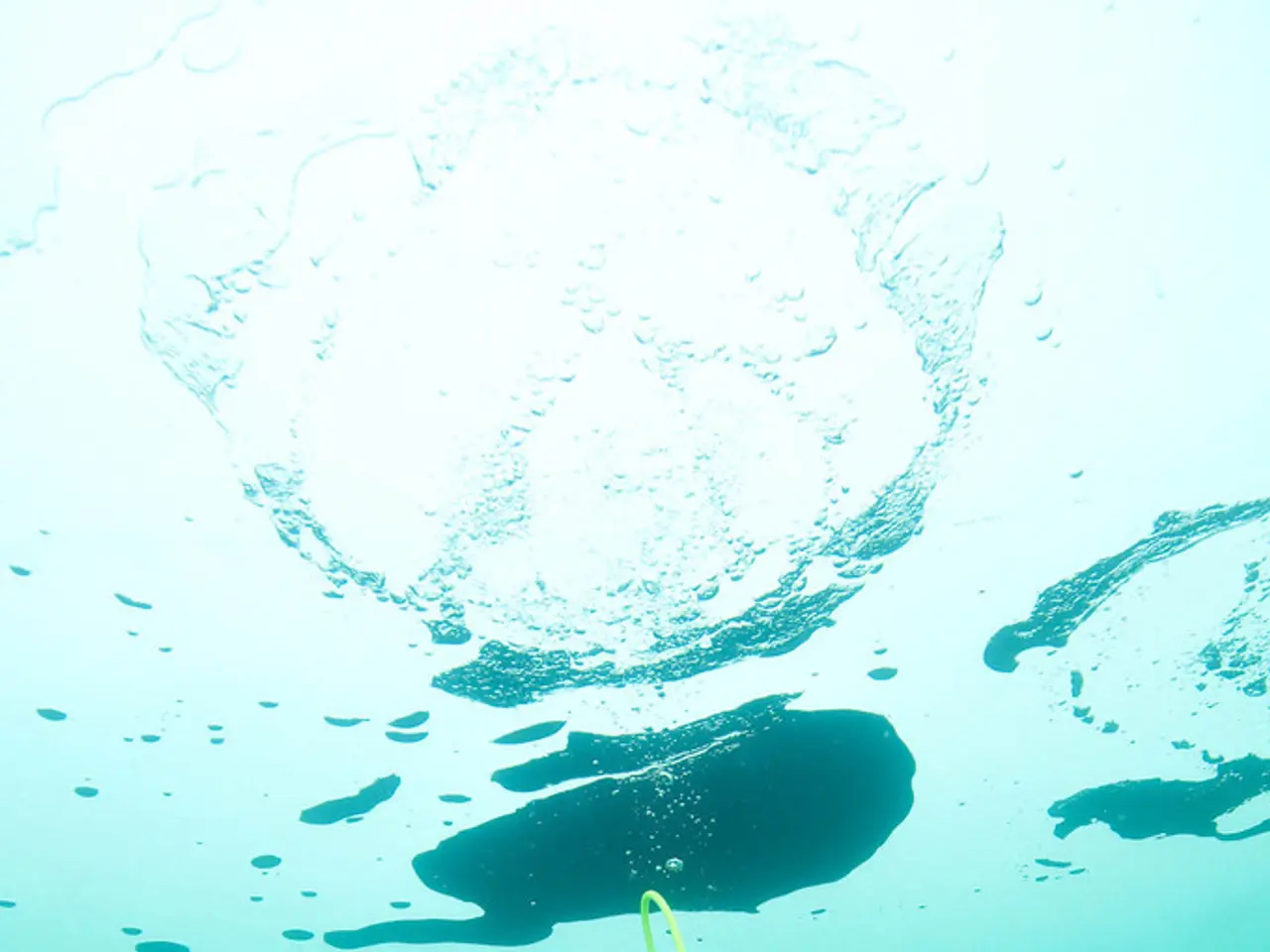Underwater Thermal Stress Test for Canon EOS R5 Camera
The Canon EOS R5, a popular camera for video enthusiasts, has been found to have notable overheating limits when used for underwater video recording, particularly at high resolutions and frame rates.
Three tests were conducted to examine this issue. The first test was in warm water (88F) with firmware 1.0.0, the second test was also in warm water (88F) but with firmware 1.1.1, and the third test was in cold water (57F) with firmware 1.1.1. Each test involved recording video with 8K @ 30p with internal RAW recording.
In cold water, the EOS R5 recorded 8K video for 25 minutes 48 seconds before overheating. In warm water, the camera overheated after 20 minutes 42 seconds and 15 minutes 40 seconds in the first and second warm water tests, respectively. The recovery time (before the camera can film for 1 min) in warm water is 14 minutes 49 seconds, while in cold water it is 11 min 13 seconds.
For 8K video at 30p, the original EOS R5 typically overheats within about 20 minutes of continuous recording, even with external cooling solutions. This is a known limitation with the original model's heat management. For 4K video at 60p, the camera can record longer—generally around 120 minutes before overheating concerns arise.
Lower resolutions and frame rates generally allow for longer recording times without overheating, but detailed underwater-specific numbers are not explicitly documented in available sources.
Underwater housings reduce heat dissipation, which can cause overheating to occur sooner than on land. While exact underwater benchmarks aren't widely published, the overheating times for high-resolution/high-frame-rate modes on land provide useful upper limits.
For extended underwater video work at high resolution and frame rates, newer models like the EOS R5 Mark II or EOS R5 C, which have enhanced cooling, may be more suitable, though compatibility with underwater housing and conditions should be verified.
After overheating, the waiting period before shooting more video can range from 10-20 minutes.
It's important to note that underwater videographers who plan to shoot 8K or 4K at 120p should expect to capture about 20-25 minutes of consecutive or non-consecutive footage in a dive. Normal dives where a mix of photos and videos are shot never resulted in overheating.
In conclusion, the Canon EOS R5 has notable overheating limits when used for underwater video recording, especially at high resolutions and frame rates. Users should be aware of these limits and consider newer models with improved cooling systems for extended underwater video work.
- The Canon EOS R5, despite its popularity among video enthusiasts, has been found to overheat when used for underwater video recording, particularly at high resolutions and frame rates.
- In cold water, the EOS R5 could record 8K video for 25 minutes 48 seconds before overheating, while in warm water, overheating occurred after 20 minutes 42 seconds and 15 minutes 40 seconds in the first and second warm water tests, respectively.
- Lower resolutions and frame rates generally allow for longer recording times without overheating, but detailed underwater-specific numbers are not explicitly documented in available sources.
- For extended underwater video work at high resolution and frame rates, newer models like the EOS R5 Mark II or EOS R5 C, which have enhanced cooling, may be more suitable, though compatibility with underwater housing and conditions should be verified.
- Underwater videographers planning to shoot 8K or 4K at 120p should expect to capture about 20-25 minutes of consecutive or non-consecutive footage in a dive.




